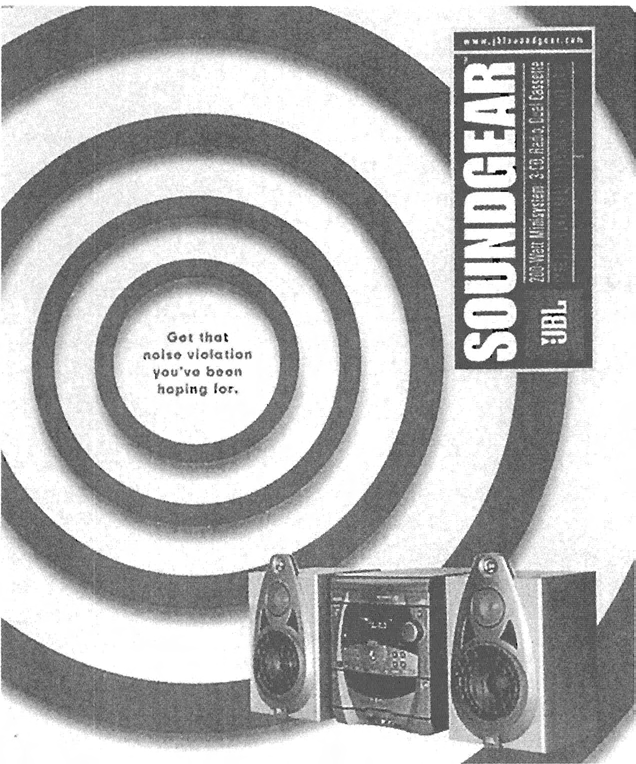CHAPTER 2
UNDERSTANDING AND APPROACHING THE MARKET
Bases for Segmentation
Primary Dimension
Consumer Market
Industrial MarKet
Characteristics of
Geography, age, sex, race,
Industry (S IC), location, size,
person or organization
income, life cycle ,
technology, profitability,
personal ity, lifestyle
legal, buying situation
Purchase situation
Purpose, benefits, purchase
Volume, frequency, application,
approach, choice criteria,
choice criteria, purchasing
brand loyalty, importance
procedure, importance
FIG URE 2.2
Bases for Segmenting Markets: Consumer and Industrial Markets
In line with these basic differences we will first discuss the bases for segmenting ulti-
mate consumers followed by a discussion of the factors used to segment industrial users.
Seg menting Ultimate Consumers
Geographic Segments
Geography probably represents the oldest basis for seg-
mentation. Regional differences in consumer tastes for products as a whole are well-known.
Markets according to location are easily identified and large amounts of data are usually
available. Many companies simply do not have the resources to expand beyond local or
regional levels ; thus, they must focus on one geographic segment only. Domestic and for-
eign segments are the broadest type of geographical segment.
Closely associated with geographic location are inherent characteristics of that loca-
tion: weather, topography, and physical factors such as rivers, mountains, or ocean prox-
imity. Conditions of high humidity, excessive rain or draught, snow or cold all influence
the purchase of a wide spectrum of products . While marketers no longer segment markets
as being east or west of the Mississippi River, people living near the Mississippi may con-
stitute a viable segment for several products, such as flood insurance, fishing equipment,
a n d dredging machinery.
Population density can also place people in unique market segments. High-density
states such as California and New York and cities such as New York City, Hong Kong, and
London create the need for products such as security systems. fast-food
and
public transportation .
Geographic segmentation offers some important advantages. There is very little waste
in the marketing effort, in that the product and supporting activities such as advertising,
physical distribution, and repai r can all be directed at the customer. Further, geography pro-
vides a convenient organizational framework . Products, salespeople, and distribution net-
works can all be organized around a central, specific location.
The drawbacks in using a geographic basis of segmentation are also notable. There
is always the obvious possibility that consumer preferences may (unexpectedly) bear no
relationship to location. Other factors , such as ethnic origin or income, may overshadow
location. The stereotypical Texan, for example, is hard to find in Houston, where one-third
of the population has immigrated from other states. Another problem is that most geographic
areas are very large, regional locations. It is evident that the Eastern seaboard market con-
tains many subsegments . Members of a geographic segment often tend to be too hetero-
geneous to qualify as a meaningful target for marketing action.
Demographic Segments
Several demographic characteristics have proven to be par-
tic ularly relevant when marketing to ultimate consumers. Segmenting the consumer mar-
ket by age groups has been quite useful for several products. For example, the youth market
(approximately 5 to 13) not only influences how their parents spend money, but also make



APPROACHING THE MARKET
37
AD 2.3
The focus is on the pre-teen to young adult segment, assuming they will test prod-
uct features at the store.
purchases of their own. Manufacturers of products such as toys, records, snack foods, and
video games have designed promotional efforts directed at this group. More recently, the
elderly market (age 65 and over) has grown in importance for producers of products such
as low-cost housing,
hobbies, and health care.
Gender has also historically been a good basis for market segmentation. While there
are some obvious products designed for men or women, many of these traditional bound-
aries are changing, and marketing must apprise themselves of these changes. The emer-
gence of the working women, for instance, has made determination of who performs certain
activities in the family (e.g., shopping, car servicing), and how the family income is spent
more difficult. New magazines such as Men's Guide to Fashion, Modem Black Man, Sports-
wear International, NV, and Vibe indicate how media is attempting to subsegment the male segment. Thus, the simple classification of male versus female may be useful only
sev-
eral other demographic and behavioral characteristics are considered as well.
Another demographic trait closely associated with age and sex is thefamity life cycle.
There is evidence iliat, based on family structure (i.e., number of adults and children), fam-
ilies go through very predictable behavioral patterns. For example, a young couple who have
one young child will have far different purchasing needs than a couple in their late fifties




38










